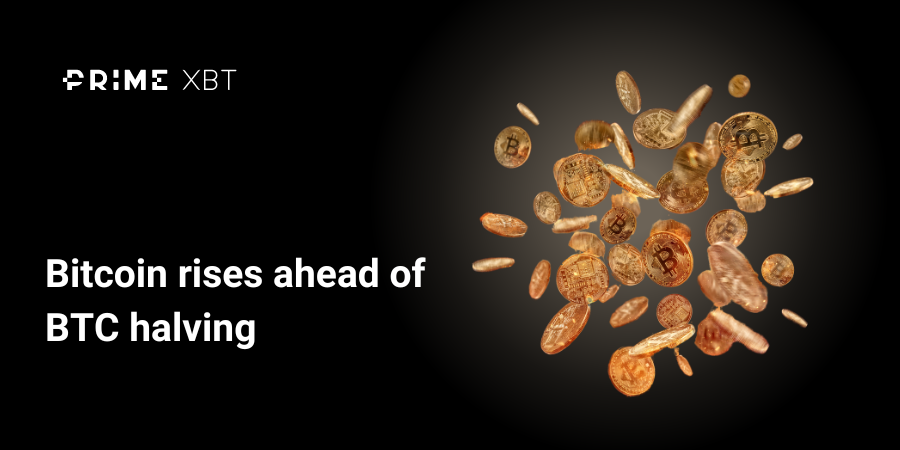In the rapidly evolving world of cryptocurrency, new players are constantly emerging to challenge established platforms. Two prominent examples of such challengers are Polkadot and Solana, both of which offer unique solutions to some of the existing blockchain networks’ limitations.
Whether you’re a crypto investor or someone interested in the future of blockchain technology, understanding the nuances of these two emerging platforms is essential for staying ahead of the curve. In this article, we’ll take a closer look at the key differences between Solana and Polkadot, and explore the potential advantages and drawbacks of each blockchain platform.
Key Takeaways:
- Polkadot aims to enable interoperability between blockchains, using a multi-chain platform with a hybrid consensus mechanism called nominated proof-of-stake (NPoS).
- Solana focuses on high throughput and efficiency with a single-chain platform utilizing a proof-of-history (PoH) consensus mechanism.
- Solana boasts higher transaction speeds (up to 65,000 TPS) compared to Polkadot (around 1,000 TPS), but faces criticisms regarding centralization and security risks.
- Both projects have unique advantages in scalability, flexibility, and community support, yet face challenges in complexity, security, and potential centralization.
Solana: The Basics
What Is Polkadot and How Does It Work?
Solana is a high-performance blockchain network that aims to provide fast and efficient transaction processing at scale with an ultimate mission to enable dApps to operate at speeds comparable to traditional web applications. Solana’s blockchain is designed to use a unique combination of technologies to achieve its high-speed and scalability goals.
Tokenomics of Solana
SOL is the native token of the Solana network and serves multiple functions within the ecosystem. The total supply of SOL is limited to 488,630,611 tokens, with some of them allocated for funding the development of the ecosystem. SOL can be used for staking, transaction fees, and governance.
By staking SOL, holders can help secure the network and earn additional tokens as rewards. Transaction fees on Solana are paid in SOL and are generally lower compared to other blockchains due to the network’s high throughput.
Moreover, SOL holders can participate in the network’s governance by suggesting modifications to the protocol and casting votes.
Advantages of Solana
Solana is a high-performance blockchain network that offers numerous advantages over other platforms. Below are some of its key benefits:
- Speed: Solana is one of the fastest blockchain networks in the world, with the ability to handle up to 65,000 transactions per second. Its high transaction speed and low fees make it an ideal platform for developers who aim to create fast and efficient applications.
- Scalability: Solana’s architecture is designed to be highly scalable, allowing it to handle a large volume of transactions and data. It uses a unique combination of technologies, including proof-of-history, that enables it to maintain top-notch performance and efficiency.
- Security: By leveraging a resilient network architecture and cutting-edge cryptography, Solana maintains a superior level of security and prevents common attack vectors, such as 51% attacks and double-spending attacks.
- Flexibility: Solana’s architecture is highly flexible, allowing developers to work on a wide range of projects, from simple token systems to complex decentralized applications. Its adaptable architecture also enables the integration of existing blockchain systems, providing developers with greater flexibility and choice in building their applications.
- Interoperability: Solana’s architecture allows for the seamless transfer of data and assets between different blockchains.
- Community: Solana has a thriving and expanding community of developers, users, and organizations. This community helps to drive innovation and ensure that the network remains relevant by providing feedback, building applications, and promoting the platform’s capabilities.
Disadvantages of Solana
- Centralization Risk: Solana uses a consensus mechanism called Proof of History (PoH) that relies on a centralized group of nodes to maintain the PoH ledger. This could create a centralization risk and make the network vulnerable to manipulation or control by a small group of actors.
- Limited Decentralization: Solana’s consensus mechanism, PoH, requires a trusted set of validators to maintain the PoH ledger. While Solana has plans to introduce Proof of Stake (PoS) and other decentralization mechanisms in the future, it may still be less decentralized than other blockchain networks.
- Security Risks: No technology is completely immune to security risks, and Solana is no exception. In fact, the network experienced a brief outage in September 2021 due to a denial-of-service attack, which raised concerns about the network’s security and resilience.
- Scalability Trade-offs: While Solana is designed to be highly scalable, achieving high transaction speeds and low fees may come at the cost of increased complexity, higher resource requirements, and potential centralization risks.
- Dependency on Solana Labs: Solana Labs, the company behind Solana, plays a central role in the development and maintenance of the network. This could create a potential single point of failure and limit the network’s decentralization and autonomy.
- Limited Adoption: Despite its potential benefits, Solana is still a relatively new platform and may not have achieved widespread adoption compared to more established blockchain networks. This could limit its network effects and usefulness for certain applications.
Polkadot: The Basics
What Is Polkadot and How Does It Work?
Polkadot is a next-generation network that aims to solve the problem of blockchain interoperability. It allows different blockchains to communicate and work together seamlessly by using a unique sharding and parachain architecture, enabling a new era of cross-chain applications and services.
Tokenomics of Polkadot
The native token of the Polkadot network is called DOT. It serves multiple functions within the ecosystem, such as staking and governance. By staking their DOT, holders can help to secure the network and earn rewards in the form of additional tokens. Additionally, DOT holders can participate in Polkadot’s governance by proposing and voting on protocol changes and upgrades.
In addition, the DOT token is utilized to pay transaction fees and to participate in certain activities on the network. The total supply of DOT is capped at 1 billion, with a portion of tokens allocated for funding the development of the network and its surrounding ecosystem.
Advantages of Polkadot
- Interoperability: Polkadot allows different networks to work together seamlessly, enabling the transfer of data, assets, and entire blockchain systems between them.
- Scalability: Polkadot is highly scalable, which means it can handle a high volume of transactions and data. Its architecture allows for the creation of a multi-chain ecosystem that can accommodate a large number of applications.
- Flexibility: Polkadot’s architecture provides blockchain developers with the freedom to create a wide range of applications, from simple token systems to complex dApps. It also enables the integration of existing blockchain systems, offering developers greater flexibility.
- Security: The Polkadot relay chain is designed to provide a secure and decentralized infrastructure to secure and verify transactions across different blockchain networks. The platform also boasts a strong community of developers and users who help to maintain its security.
- Innovation: Polkadot’s architecture empowers the development of new and innovative blockchain solutions. It also enables the integration of established and proven blockchain technologies, providing developers with a potent toolset for creating cutting-edge applications.
- Community: Polkadot has a strong and growing community of developers, users, and organizations, which fuels the innovation and adoption of the platform and ensures that it remains relevant and useful.
- Decentralization: Polkadot operates on a decentralized network, meaning that no entity can control the data being used by it and there is no single point of failure. This ensures that the platform is resilient and secure.
Disadvantages of Polkadot
- Complexity: The architecture of Polkadot is intricate and may be difficult for some developers to understand and work with.
- Governance: Polkadot’s elaborate governance model involves multiple stakeholders in the decision-making process, which tends to be time-consuming and can potentially lead to conflicts.
- Reliance on a Single Project: Polkadot’s success is heavily reliant on the performance of its core project. Thus, if the latter fails or suffers from security issues, it could impact the entire Polkadot blockchain ecosystem.
- Security Risks: Despite its focus on security, Polkadot is still a relatively new platform, and there is always the risk of security vulnerabilities and attacks.
Key Differences Between Polkadot and Solana
Let’s explore the key differences between Polkadot and Solana, highlighting their strengths, weaknesses, and potential use cases.
- Polkadot is a multi-chain platform designed to connect and communicate with other blockchains, while Solana is a single-chain platform that uses a unique proof-of-history consensus mechanism to achieve high throughput.
- Polkadot aims to enable interoperability, allowing seamless communication between different blockchain networks. Solana, while not explicitly focused on interoperability, can still communicate with other blockchain networks through its use of bridges.
- Polkadot uses a hybrid consensus mechanism called nominated proof-of-stake (NPoS), while Solana uses a proof-of-history (PoH) consensus model.
- Solana is currently capable of processing more transactions per second than Polkadot, with its TPS capacity exceeding 65,000. Polkadot, on the other hand, has a TPS capacity of around 1000.
- Solana’s token, SOL, has a fixed maximum supply, while Polkadot’s token, DOT, has a variable supply that can increase through staking rewards.
While both projects have growing communities and developer ecosystems, Polkadot has a more established network of projects and partnerships.
Solana vs Polkadot: Key Similarities
Solana and Polkadot have several key similarities. Firstly, both are blockchain platforms that address the scalability challenges that existing blockchain networks face. Secondly, they both offer the ability to deploy decentralized applications (dApps) and provide developers with powerful tools for building on their platforms. Lastly, both projects have a growing community of developers and enthusiasts who are actively contributing to their ecosystems.
Comparison Table of Polkadot vs. Solana:
| Feature | Polkadot | Solana |
| Launch Date | May 26, 2020 | March 22, 2020 |
| Consensus | Nominated Proof-of-Stake (NPoS) | Proof-of-History (PoH) and Tower BFT consensus algorithm |
| TPS | Up to 100,000 | Up to 65,000 |
| Block Time | 6 seconds | 0.4 seconds |
| Token | DOT | SOL |
| Maximum Supply | 1 billion | 500 million |
| Cross-Chain | Yes, through the Polkadot Relay Chain | No |
| Smart Contracts | Yes, using the Polkadot Substrate framework | Yes, using the Solana SDK |
| Ecosystem | Has a large and growing ecosystem of projects and developers | Also has a growing ecosystem with a focus on DeFi and NFTs |
| Governance | Decentralized governance with DOT holders able to vote | Decentralized governance with SOL holders able to vote |
| Security | Secure and audited code with bug bounties and a security team | Secure and audited code with a bug bounty program and audits |
SOL vs. DOT: Historical Price Action Reviewed
Solana was launched in March 2020, and the price of the SOL token started at around $0.23. In just over a year, it has skyrocketed to reach an all-time high of around $258 in September 2021. The price then experienced a correction and has since stabilized at around $40-50 as of March 2023.
Polkadot, on the other hand, was launched in August 2020 with the initial price of DOT being approximately $2.90. Since then, it has shown a steady rise, reaching an all-time high of around $50 in May 2021. Similar to SOL, DOT’s price experienced a correction and has since held steady at around $30-40 as of March 2023.
When comparing the historical price action of SOL and DOT, it’s clear that both have experienced significant growth and volatility. However, SOL has shown more extreme price swings, with a higher all-time high and a more drastic correction. DOT has shown more stability in its price, with a slower yet more steady increase in value.
DOT vs. SOL: Which One Is a Better Investment?
This is a tricky question to answer because, quite frankly, both Polkadot (DOT) and Solana (SOL) are promising blockchain projects. Before investing in either, it’s important to understand their underlying technology, use cases, community, and potential risks. Besides, factors like your investment goals, risk tolerance, and overall portfolio diversification should also be taken into consideration. It’s always recommended to consult with a financial advisor before making any investment decisions.
Is Polkadot Better Than Solana?
It's difficult to say whether Polkadot is better than Solana or vice versa, as both of these networks have enormous potential and feature their unique strengths and weaknesses. The choice between the two may ultimately depend on the specific use cases, goals, and preferences of the user or investor.
Does Polkadot Run on Solana?
No, Polkadot does not run on the Solana blockchain. While both Polkadot and Solana are promising blockchain projects, they are distinct and independent of each other and feature their own architecture, consensus mechanisms, sets of features, and future growth perspectives.


